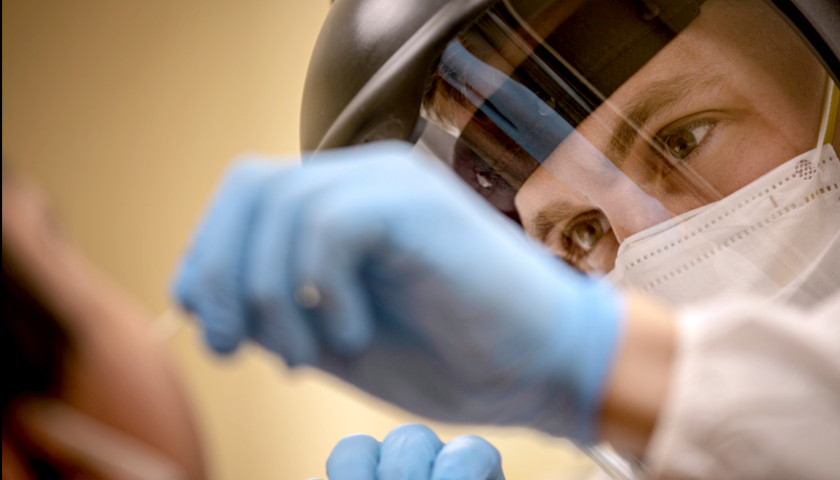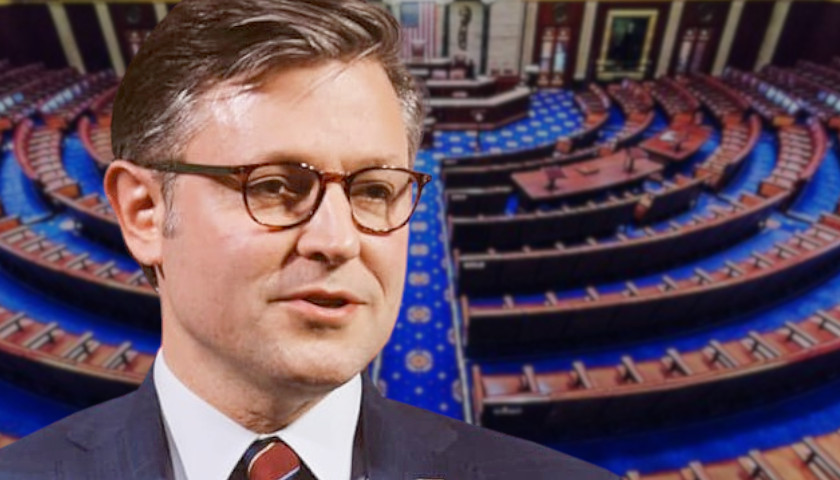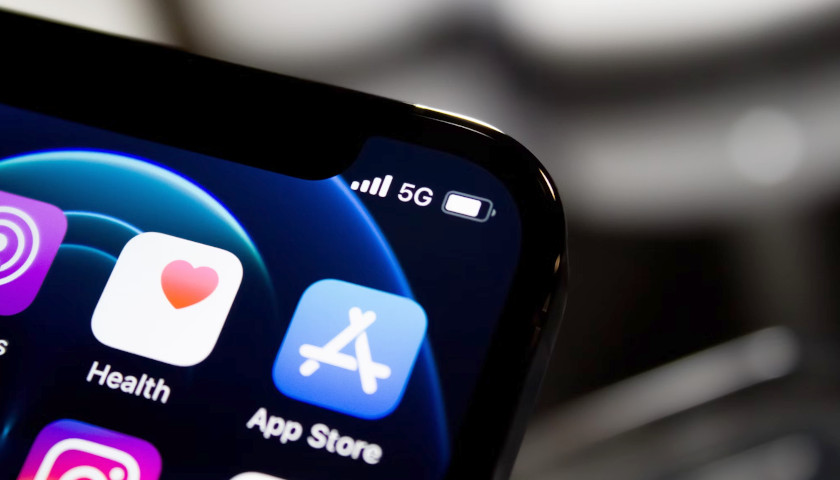by Roger W. Koops
Dr. Carl Sagan was one of the premier scientists when it came to trying to bridge the gap of hard science with general public understanding. In the process, his personal enthusiasm for the wonder of science became evident to all. He also understood that science could be hijacked and that the highest standards of evidence were required when fantastic claims were being made.
In just a few short months, the world has gone from a normal functioning society to one of extreme panic and chaos (maybe The Twilight Zone could not have conceived of this to such a degree). We have seen the very foundations of human existence cracked, some might say disintegrated. There has been induced panic and hysteria, cultural and social disintegration, censorship, political hijacking, economic collapse and hardship, imposition of laws in free societies incurred beyond the usual process of lawmaking and resembling totalitarian regimes. In short, human existence has been turned upside down. Fortunately, there have been some zones of sanity around the world, but far too few.
The panic that has been induced has been directed towards trying to convince the public that SARS-COV-2, which I will refer to simply as coronavirus, is an apocalyptic virus that will doom anyone that gets it. This effort continues to this day.
Avoiding the virus, or run and hide, has been the major theme of the inducement. Therefore, the message is that all of these extreme measures are necessary to save people from the horrors of the disease. This is truly an extraordinary claim. So, where is the extraordinary evidence?
First, we need to go back in time BEFORE the panic because it seems that the collective memory of society has been lost.
A. Pandemic Start and Spread
Recently, the European CDC published a lengthy report updating the science and what we know about this virus and the disease. They reported that serology studies have indicated that this pandemic could have started as early as the beginning of October 2019.
This is significant beyond words.
While it has been assumed that this started in Wuhan, China, it is still not clear if that was the actual starting point or the catalyst for pandemic. Wuhan is a major metropolitan city of China and is the center for advanced technology, commerce, arts, science, and culture. It has a population of about 17 million people. Last fall, Wuhan was the site for many international events in the aforementioned areas. For example, Wuhan was the site for the World Military Games (an Olympics of sorts for military personnel) that ran for about ten days from October 18-27 with over 9,000 competitors from over 80 countries. What better opportunity for the spread of a virus?
In addition, Asia hosted many international events last fall, including the Rugby World Cup and the Women’s World Handball Championship (both Japan), the World Track and Field Championships in Dubai, and even the PGA held a tournament in China. Include the numerous technology, university, cultural, and other events and conferences that were conducted in Wuhan and you have a huge opportunity to export the virus to the world.
But, you do not even need all of that. Given the great number of flights from Asia to all parts of the world that occur (or did occur) on a daily basis, and you have people from all parts of the world as potential carriers of a virus.
By the time medical researchers in China started to take notice, it was into December. They originally reported a cluster of pneumonia cases of unknown origin and they eventually traced it to a coronavirus. By this time, the pandemic was likely well underway in many countries but was going unnoticed. Why? The symptoms mimic the other URI, mainly influenza and colds, but also bacterial infections such as bronchitis or sinusitis, and were being treated as such. Remember, we are still in the B.P. (Before Panic) period.
By the time we are ending 2019 and entering 2020, people around the world are experiencing the disease. Even the U.S. CDC recently said that this virus was already in the US by early January 2020 (and quite probably before). People were still going to concerts and sporting events; kids were going to school; people socialized with other people without fear; and yes, people were getting sick.
There were probably some serious cases, just like influenza and colds, and yes, some people were dying from the disease. Remember, at that time there was still no test for this virus. People who were sick and seeking medical help were being diagnosed with symptoms and were quite likely being diagnosed for any URI like influenza, colds, bronchitis, or sinusitis.
Where was the extraordinary evidence? If this was truly an apocalyptic disease, we certainly would have seen it by that time.
By mid-January, the first testing was available. The first testing was limited so it was not applied to the general population. In the US, it was focused on travelers from China and very quickly the first confirmed case was found near Seattle in a person who had traveled to China for business and returned. This was not the actual first case in the US. This was only the first confirmed case by testing. In fact, shortly after this, by early February, some nursing homes were starting to report problems; how could that be possible? Even so, panic had not erupted. Life was still continuing as normal even though this virus was circulating.
During February, more cases were being confirmed. The health agencies everywhere, Europe CDC, US CDC, Australian and British Health Authorities, Japan Ministry of Health, etc. were all issuing the same advice to people. If you become sick, stay at home, drink plenty of fluids, rest and take pain relievers as needed. Essentially, treat it like the flu. It was already becoming understood who were the at risk groups-the same as influenza. The advice was that if symptoms worsened or you started to have breathing problems, go seek medical care. There were no calls to mask people, only to practice common respiratory etiquette of blocking your cough or sneeze. There were no calls for physical distancing (and yes, physical distancing is different from social distancing).
During February, gradually there became an understanding that we were experiencing a pandemic but still no extraordinary evidence of anything any different than a typical URI pandemic.
B. Panic Start
March 2020 has become the turning point from before to after panic. Why induce panic? We understood much about the virus and the disease, COVID-19 (notice the name is for Corona Virus Disease-19, i.e. starting in 2019, NOT 2020), so why now? Was there something different? The answer is no.
It is well known that panic and anxiety changes the chemistry in the brain. In fact, rational thought diminishes rapidly in a panic state. Governments know this and use it to coerce populations to follow what they might normally consider to be questionable or bad policy.
A recent example in the US comes from the attacks on 9/11. The government used that horrible event to try and convince people that the US was going to be under more-or-less constant attack from terrorists. The Department of Homeland Security was established. Remember the warning color codes issued daily? They never fell below “high” and “elevated.” People were told that if they go to shopping centers, sporting events, etc. that hordes of terrorists were ready to come and cause damage.
Does this ring a bell? How about now, just substitute coronavirus for terrorist and you have almost the exact repetition of fear (do it for the lines below). Remember at the beginning in March, the following mantra:
We are at WAR with this virus (Nonsense, you cannot fight a war against a virus)
We must unite to DEFEAT this virus (Nonsense again, humans adapt to it and vice versa)
Everyone must SACRIFICE to defeat this virus (A foreboding of what was to come)
We are in this TOGETHER (Trying to set the foundations for silencing dissenting opinion?)
So first of all, in order to implement the horrific policies which were about to be unleashed on society, the government had to create a state of panic. But, unlike 9/11, when some news media questioned the premises, this time the main news media was in hook, line, and sinker and they continue still in that mode. Why that should be I am not sure and it is better left to others to decipher.
Where is the extraordinary evidence?
Well, some people point to the death toll. The current per capita (pc) death rate for COVID-19 (about 7 per 100,000 for the world and about 36 per 100,000 in the US) is far below that for both the Asian and Hong Kong flus of the 1950s and 60s both for the world and the US (both about 30 per capita for the world and 44 per capita for the US). At that time, the world population was about half of today but over 1 million people died. The US population was about 2/3rds of today but over 100,000 people died. Those pandemics did not induce lockdowns, physical distancing, masks, etc. and society and culture continued.
But, what do we know about deaths from this disease? Throughout the world, about 85-90% of all death occurs with the elderly over 70 years of age, and not just any elderly, but those with problems such as hypertension, obesity, kidney disease, heart disease, lung disease, liver disease, or weakened immune systems. Yet, in this elderly population over 70, 70-90% who experience the disease still SURVIVE. Yes, the people most susceptible to serious disease and death actually SURVIVE more than they die. These are numbers that one will find also with most influenza pandemics. Further, throughout the world, about 50% of elderly deaths occur in long-term care facilities.
Where is the extraordinary evidence?
As a person’s age goes down, the risk of severe disease decreases but there is still a link to the same health risks listed above. But, now you start adding some new demographics into the severe disease and death picture. Two groups stand out in particular; first, low income groups in high density population areas (the Bronx in New York City leads the US in per capita deaths of any county with a significant population), and second, health care workers. When one looks at Europe, major areas of severe disease are densely populated urban areas with indigent poor or refugees (Spain-Barcelona/Madrid; France-Paris; Italy-Milan; Belgium-Brussels, etc.) Why should this be the case? There are two major reasons and they are lockdown policies and viral load.
What is Viral Load?
Viral load (a term everyone should begin to understand) and immune response are the keys for how any individual will deal with a viral respiratory infection (the same holds true for bacterial infections, can we say “bacterial load?”). Viral load is just a technical way to describe the amount of virus working in the body. To understand about viral load, people need to understand how the virus works in the simplest of terms.
Outside of the body, a virus is a protein, an organic molecule that does little and can break apart under various conditions. Influenza, coronavirus, and rhinovirus are very, very small in the natural state (each ranging from 10-120 nanometers); much smaller than a bacterial cell. They cannot be seen with an ordinary microscope and require an electron microscope.
Certainly, humans have absolutely no way to know if a virus is present or not, until it is too late. You cannot see it, smell it, taste it, or have any other sensory perception to its presence. It can pass through most things (including masks) undetected. It can be dispersed easily with air handling systems and can land on any surface. In short, it can be considered an environmental toxin at the nanometer scale.
The stability of these viruses in the natural environment is usually limited. For example, coronavirus is unstable with pH below 3 or above 10 and breaks down quickly; UV radiation, heat, chemical oxidants such as bleach also break it down quickly. However, on some surfaces it can survive; for example, it has a half-life of almost 7 hours on smooth plastic (so what is the purpose of all the plastic sheets?).
What does that mean? Well, let’s say that the plastic is contaminated by 100 million virus particles. Seven hours later there will still be 50 million particles. Seven hours later from that there will be 25 million particles, and so on, assuming no new introduction of virus. Since the virus survives better on some surfaces as opposed to others, infection by contact (fomites) can occur.
Once inside of the body, the virus is not an environmental toxin but now works as a parasite. It will find cells that it can penetrate (URIs target nasal, throat, and upper airways) and once into cells, it uses that cell to manufacture more virus, which are in turn released back into the body. As more virus is produced, more cells are infected and more virus is produced, the viral load rises, just like when a factory increases its production its inventory of goods also goes up. The human body becomes a virus production factory. Bacteria, however, are their own production factory-they do not need human cells to reproduce. This is why it is easier to develop antibiotics than antiviral drugs.
But, a virus works differently from bacteria in another way. Bacteria start to multiply immediately, doubling their numbers each time there is growth, usually within minutes. Viruses are more subtle; they seem to do nothing for a period of time and then suddenly they take off. This is probably due to the time it takes to invade the cell and start to commandeer the cell machinery for production.
Your body detects when a virus has started to go to work and generally begins to attack the virus using the immune system. If your body has no specific antibodies for the virus, it will send its general array of immune system defenses after the virus (since this coronavirus is a new version, this is what will occur).
The goal is to control the viral load long enough for a healthy immune system to develop specific antibodies to combat the virus directly. At some point, these antibodies start to take over. In a healthy person, this timing can vary from a few to several days but is usually enough to lessen the disease process and bring about a normal recovery.
The viral load can be more difficult to control with the following circumstances:
- The initial viral infection or initial viral load was high. If you get a good blast of virus to start, the factory could be well into production mode by the time your immune system responds. The more you get to start, the tougher to control.
- Your immune system is weakened due to age or other disease processes. The ability to respond is now reduced so the viral production can outpace your immune response.
- You have pre-existing disease in susceptible parts of your body, such as lung disease, etc. It becomes easier for the virus to penetrate and continue the production. Unfortunately, it also means greater damage to an already damaged part of your body.
- You continue to get virus exposure while combating the viral load. This is the piling on of viruses when you are already down. Illegal in football but not in viral disease. This is a critical point in care facilities or crowded areas.
As a result, healthy people can experience anything from a minor, uncomfortable illness to something a little more, but, generally, they will recover and go on. People who have more difficulties in controlling viral load will suffer more. The Europe CDC has reported that viral loads with coronavirus in severe cases are 50-60x that in mild cases. Controlling viral load with help determine the course of the disease.
So, what role does a lockdown or other similar policies play in the death toll situation? Epidemiologists understand that you cannot force viruses and virally infected people into confined spaces. When you combine people together in close spaces, with poor ventilation, poor sanitation, common use items, etc., if one gets sick, all are likely to get sick.
But, it goes beyond just getting sick; you are also setting the conditions that are ripe for increasing viral load. You now have many virus factories together, producing away at an awesome rate. While the production is occurring, the body is also releasing virus, called “shedding.” This can occur from the mouth and nose, such as in coughing or sneezing but also from feces. It can be easy to imagine how quickly viruses can build up and be spread under these conditions, especially in elderly care facilities.
In places like retirement homes or long-term care facilities, institutions (i.e. prisons, recovery centers, etc.), hospital wards, refugee camps, inner city tenement housing and public housing developments, etc. such conditions exist and will cause the worst outcomes. And this is exactly what has been seen.
The risk to the general public has never risen above a stated level of low to moderate from any Health Authority. It has always remained high in the at-risk groups and yet the lockdown policies are the worst for these high risk groups. Add to that the policies of actually placing infected individuals into facilities of high risk groups and now you have truly a health crisis.
So what is the extraordinary evidence? Well, now the evidence seems to point to lockdown policies as exacerbating the disease process, not reducing it.
Consider also the health issues that contribute to the risk of severe disease, with this or any other URI. The US CDC publishes annual reports on the health risks in the US. The results are as follows:
- Obesity: The U.S. has the highest adult and child obesity rate in the world.
- Hypertension: The U.S. also is number one with hypertension and heart disease.
- The US is at or near the top also with diabetes, lung disease, cancer, liver and kidney disease.
In June, the US CDC published a report on US mortality for 4 months from the first of February to the end of May. Pneumonia deaths outpaced COVID-19 deaths (and we have antibiotics for pneumonia). Combined, they totaled about 15-20% of the total deaths in the US during that period. Shouldn’t an apocalyptic disease be much more prevalent?
Recently, the CDC has reported that based on serology, as many as 10-20x more Americans have experienced the disease than the confirmed cases (that number could increase). Well, this is no surprise since we know that (1) most people who experience the disease experience mild disease and do not seek medical help and have not likely been tested, and (2) the likely start time of the pandemic was much earlier than believed which meant the disease was passing through the population long before the panic. If we use the conservative number of 10x, the current lethality rate goes from about 5% to 0.5%. If we use a 20x number, it is now about 0.25%. If that factor increases more, the rate will be further reduced. The known lethality rate for influenza is 0.15-0.20%.
Where is the extraordinary evidence?
Since testing was started for COVID-19, Asia has shown very small numbers. Why should that be? Could it be possible that this disease passed through Asia during December 2019 and January 2020 before the panic? Did it fly under the radar because it can be so confused with influenza, the common cold, bronchitis, or other respiratory infections? Quite possibly that is the case, especially considering all of the activities in Asia. Most cases that have been reported have been clusters, and yes, about 50% of the clusters have been in care facilities.
No matter how you analyze it, this virus is not apocalyptic.
If there is no extraordinary evidence, why are there such extraordinary claims and responses? Why has the world medical, social, and economic order been torn apart for a pandemic that looks much like a normal influenza pandemic? These are the questions for which we will be seeking answers for years to come.
– – –
Roger W. Koops holds a Doctor of Philosophy (Chemistry) degree from the University of California, Riverside as well as Master and Bachelor degrees from Western Washington University. He worked in the Pharmaceutical and Biotechnology Industry for over 25 years. Before retiring in 2017, he spent 12 years as a Consultant focused on Quality Assurance/Control and issues related to Regulatory Compliance. He has authored or co-authored several papers in the areas of pharmaceutical technology and chemistry.





